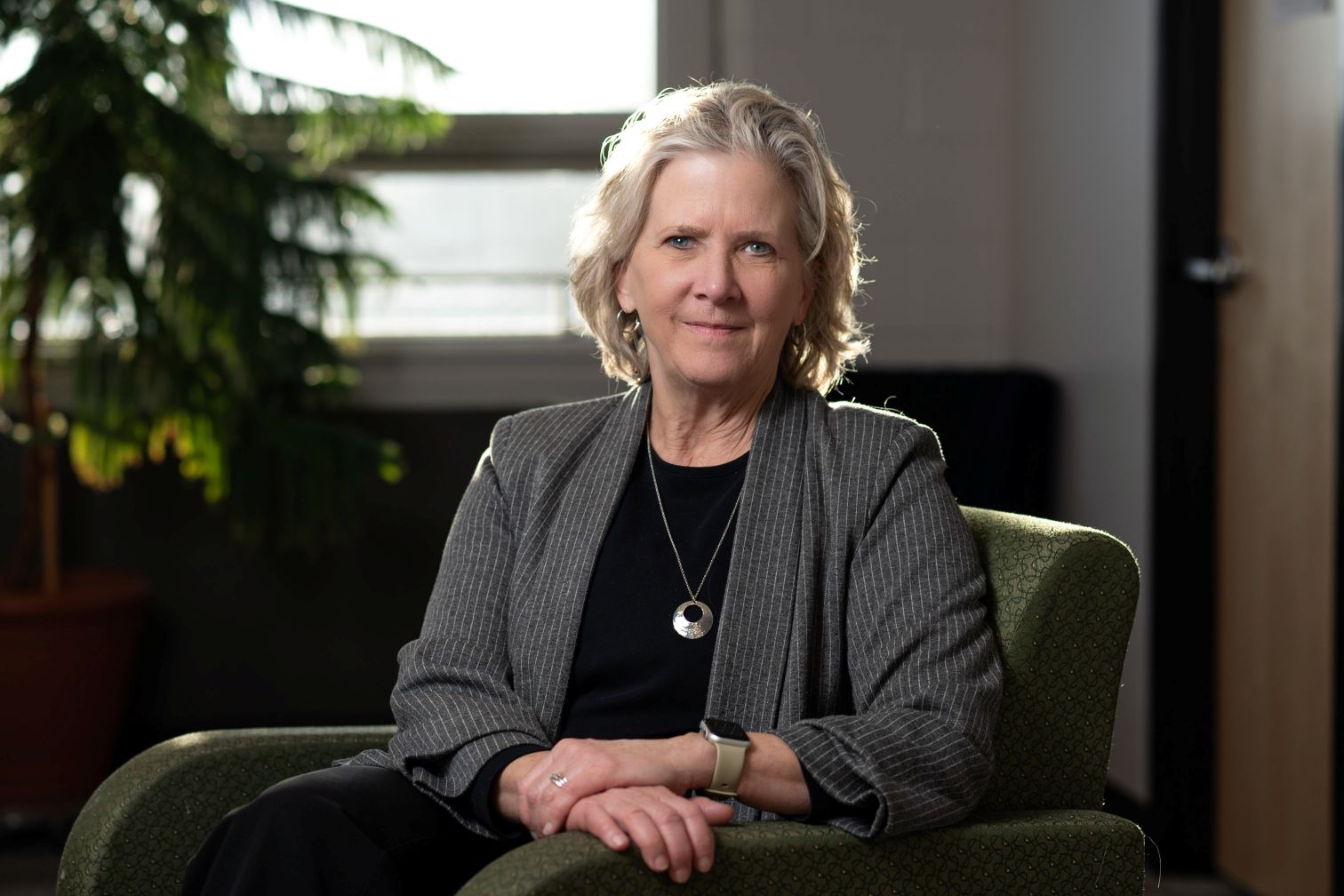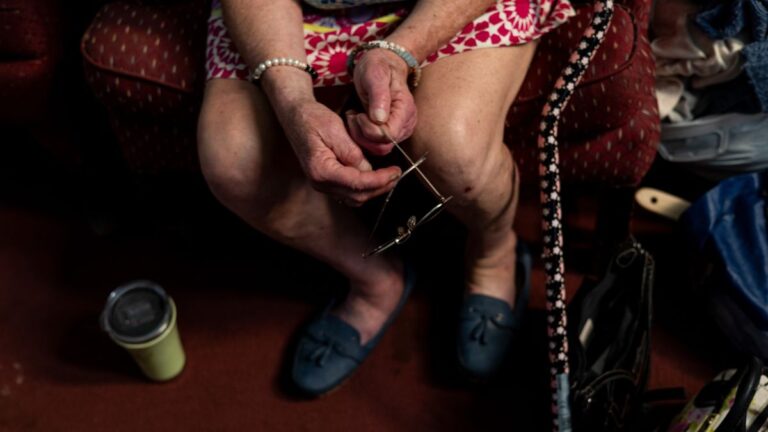The mental health provider workforce in Maine has increased substantially in the past five years, but providers say the increase has had little impact on lengthy waitlists for those waiting for care.
The data, provided to The Maine Monitor by the Maine Department of Health and Human Services and analyzed by the Investigative Reporting Workshop, shows an increase due primarily to a jump in the number of licensed social workers, which saw an increase from 4,413 licensed providers in 2019 to 7,613 in 2024.
Overall, the total number of mental health providers in the state — including counselors, substance use counselors, social workers, psychiatrists and psychologists — went from 7,494 in 2019 to 12,060 in November of 2024 (2024 data does not include psychiatrists, as figures were only available until 2023).
Despite the increase, agencies say they are still struggling to hire providers and patients are still waiting months for care.
Jayne Van Bramer, CEO of Sweetser, a non-profit behavioral health provider, said the organization has had an extremely difficult time hiring clinicians.
“Workforce shortages are really at the heart of our access problems,” Bramer said, adding that many clinical positions, which require the highest requirements and degrees, remain open.
Jeri Stevens, co-president and former president of the Maine Mental Health Counselors Association and a psychotherapist who has been practicing in Maine for 45 years, said she is “not necessarily seeing the growth in providers for the clinical level.”
The numbers provided by the state show that the number of clinical counselors licensed in the state nearly doubled from 1,229 in 2019 to 2,438 in 2024, and the number of licensed clinical social workers went up 80 percent, from 2,639 in 2019 to 4,773 by Dec. 2024.
The only mental health field that did not see an increase in the number of providers was psychiatrists, whose number dipped from 110 in 2019 to 60 in 2022, according to the U.S. Bureau of Labor Statistics.
The figures provided by the U.S. BLS differ significantly from Maine’s Board of Licensure in Medicine, which showed 343 active licensed psychiatrists in Maine as of Jan. 2025. Timothy Terranova, executive director of the Board, told The Monitor that the state does not track active licenses by year.
There could be several reasons for the discrepancy in figures, said an Occupational Employment and Wage Statistics (OEWS) representative in an email. The BLS survey is based on all part-time or full-time workers who are paid a designated wage or salary, which would exclude “providers who work in other occupations, self-employed providers, household workers or unpaid family workers.”
Terranova said the discrepancy could also be due to the fact that “an active license does not mean that a license holder practices in Maine.”
A survey published last fall led by several advocacy organizations, including the National Association of Social Workers Maine Chapter, found that “while the Bureau of Labor Statistics reports that behavioral health clinicians are among the top twenty fastest-growing U.S. occupations, national projections of Maine’s supply and demand of [behavioral health] providers don’t equate to what providers and patients are experiencing.”
“Wait lists for care are growing, inpatient beds are closing and patients are lingering for weeks in emergency rooms waiting for intensive care that does not exist,” the authors wrote.
Catching up to demand, greatest need in rural areas
While there are more providers overall, there’s also a greater need for mental health care.
“The needs (for service) have been increasing, and I think that COVID made some inroads in lessening stigma in terms of health. So that increases demand too,” said Chapter President Julie Schirmer.
The survey found “access challenges across the board” for those seeking behavioral health care, with the greatest gaps in care being for therapy and prescribing services, particularly in rural areas.

According to the study, nearly thirteen thousand patients were seeking an individual provider, mental health counseling or prescribing services in Maine, waiting an average of eight months for care. Patients with the longest wait times were those waiting for mental health counseling, with more than 8,000 patients waiting for six to 24 months.
The survey also found that organizations were closing services due to issues with reimbursement levels not meeting the cost of care and difficulty hiring and retaining clinicians.
Bramer, of Sweetser, said hiring in rural areas has been extremely challenging.
“Unless you grew up in that area, providers do not want to move to a rural area. There’s not enough for them to do,” said Bramer. “They’re just not going to move there.”
Provider shortages strain capacity
Bramer added that the demands of the job are also impacting the workforce. “We’re seeing compassion fatigue. We’re seeing burnout. We’re seeing folks who, even if you can hire them, they don’t stay.”
The issue is not limited to rural areas, however. The survey also noted that agencies are having an increasingly difficult time recruiting for positions in Portland, where the cost of housing has gone up significantly in recent years.
Caroline Shanti, the Associate Dean of the School of Social Work at the University of Southern Maine, said costs are also impacting students. In the past few years, there have been significantly fewer applicants to the program, said Shanti, with students increasingly struggling to afford the cost of living in Portland, often carpooling long distances.
According to Shanti, the bachelor’s in social work program admitted an average of 120 students annually before the pandemic, dropping to roughly 70 students during the pandemic, and is slowly making its way back up.
“We have a large majority of commuters,” Shanti said of the program.
Shanti said there has also been trouble getting students placed in agencies for internships. An internship is a requirement to become a licensed provider in the state, but most are unpaid, and students are increasingly not interested or financially able to participate in unpaid internships. In addition, providers can’t take on interns if they lack the time and resources to supervise them.
“It’s hard for us to find enough placements for all the students that we have, because the industry is so stressed,” Shanti said.
This mismatch between supply and demand, specifically the workforce shortage, has ripple effects for the patient, said Van Bramer. “They result in service reductions, enclosures and long wait lists and in people being served in those more expensive settings — like hospitals, like emergency rooms, and even the criminal justice system.”
Waiting that long for care can also exacerbate a person’s mental health issues, said Stevens.
“If I’m a person who’s not (mentally) well right now and I think that I need services, I don’t have the capacity to start calling around. I’m desperate,” Stevens said.
“For me to keep calling and calling and calling and have people not return calls or tell me they can’t take me … just feeds into my mental health issues.”
Correction: this story was updated on March 13 to clarify that Jeri Stevens is the co-president of the Maine Mental Health Counselors Association as well as the former president.







